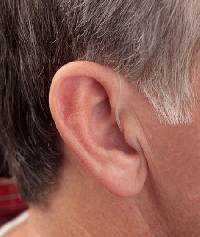
Here is how to get affordable hearing aids – don’t pay a king’s ransom
You can?t hear. You know it. Time and time again you?ve asked your spouse or someone at work to repeat what they?ve said. You turn the volume on the television up too high, according to your entire family. You are beginning to feel a bit isolated because you can?t keep up with the conversation when in the midst of a group of people. This sensation of being left out is causing depression.
Are you worried about cost, and need to know where you can buy affordable hearing aids? You must find a low-cost but high quality hearing aid that addresses the needs of those with hearing loss. There are both affordable digital and analog one-size-fits-most hearing aids that take advantage of current technology avoiding over-amplification of background sounds while providing clear amplification of the range of sounds associated with the human voice.
Shop online at hearing aid specialty stores and assistive device retailers to find the best deal. What for sales and promotions, especially on the internet. You can look for good prices on the device that will work for your hearing loss situation at local stores and chains. If your hearing loss is not immediately effecting your work or daily living, you can keep an eye out for the best prices and time your purchase to save the most money.
~
A hearing aid works by transporting sounds from your surrounding environment into the ear and making the sounds louder.
They can be worn behind the ear (BTE) or in the ear (ITE.) A behind-the-ear aid hooks over the top portion of the ear, resting behind the ear. The hearing aid is connected by a tube to an earpiece, referred to as an earmold, fitting into the ear canal. The BTE is capable of stronger amplification than other types but may pick up more wind noise than other styles.
An in-the-ear (ITE) either fills the majority of the bowl-shaped area of the outer ear (full shell) or only the lower part (half shell.) The ITE may be visible in the ear and may pick up wind noise more so than smaller devices. The speaker can get clogged by earwax. It is easier to handle than other types and is equipped with volume control.
Another style is completely-in-the-canal and is molded to fit inside the ear canal. This is the least visible style and smallest but it doesn?t come with features such as a directional microphone or volume control. It can be difficult to handle but it is less apt to pick up wind noise than other styles. It can become clogged by earwax.
Another type is in-the-canal (ITC) which fits partially in the ear canal and is custom molded. It is not as visible as bigger styles and has features the completely-in-the-canal doesn?t have but is small and may be difficult to adjust. It can become clogged by earwax.
Similar to behind-the-ear aids, the receiver-in-canal (RIC) and the receiver-in-the-ear (RITE) types feature the receiver or speaker in the canal or in the ear. A small wire connects the pieces. The RIC features a less obvious behind-the-ear portion but is susceptible to clogging by earwax.
It could be you don?t need an aid at all. Have your doctor check your ears. If you have a buildup of wax or an infection this can result in hearing loss. Have an audiologist check your hearing. Your physician can refer you to a hearing specialist (audiologist.)
When in the process of getting an aid, ask questions. Ask how much noise reduction is provided in the various types of aids. Ask about directional microphones, which are situated to allow for improved pickup of sounds from behind or beside you and in front of you. Does the aid have rechargeable batteries?
Does it consist of wireless connectivity or come with a remote control, allowing you to adjust the features without handling the aid? A direct audio input enables the wearer to plug into audio from a computer, TV or music device. Does the product consist of noise cancellation, which blocks out background noise?

